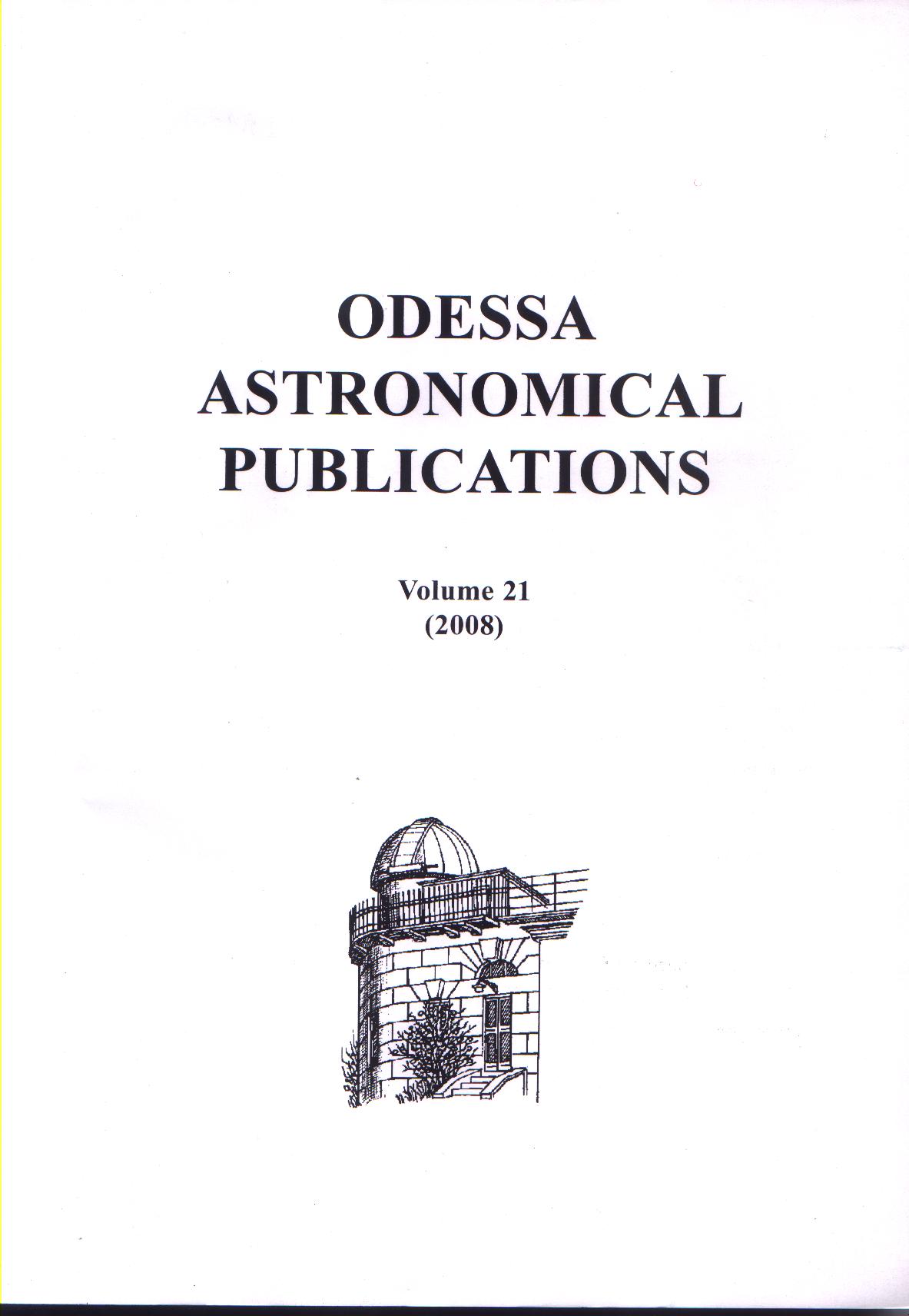Non-LTE LINE FORMATION FOR Zr I/II IN COOL STARS
DOI:
https://doi.org/10.18524/1810-4215.2008.21.86883Ключові слова:
Line, formation, Sun, atmosphere, stars, abundance, line, profilesАнотація
Non-local thermodynamical equilibrium (non-LTE) line formation for neutral and singly-ionized zirconium is considered for the first time through a range of stellar parameters when the Zr abundance varies from the solar value down to [Zr/H] = - 3. The model atom includes 63 combined energy levels of Zr I, 247 levels of Zr II and the ground state of Zr III. It is shown that the Zr I levels are depopulated relative to their thermodynamic equilibrium populations in the line formation layers with logτ5000 < 0.1 resulting in weakening the Zr I lines relative to their LTE strengths. The ground state and low-excitation levels of Zr II keep their LTE populations throughout the atmosphere, while the excited levels of Zr II are overpopulated. This leads to weakening the Zr II lines arising from the ground state or low-excited levels. The role of inelastic collisions with hydrogen atoms in the statistical equilibrium of Zr I/II is estimated empirically from inspection of their different influences on Zr I and Zr II lines in the solar spectrum. The mean non-LTE abundance of zirconium in the solar atmosphere is determined as logεZr,sun = 2.61+-0.09 from the lines of two ionization stages, Zr I and Zr II. The dependence of non-LTE effects on the atmospheric parameters is considered for a small grid of model atmospheres with Teff = 5500K, logg = 2.0 and 4.0, [M/H] = -3.0, -2.0, -1.0, and 0.0. The departures from LTE increase with increasing the luminosity and decreasing metal abundance (metallicity).Посилання
Anders E. & Grevesse N.: 1989, Geoch. & Cosmochim Acta, 53, 197.
Arlandini C., Kappeler F., Wisshak K. et al.: 1999, Astrophys.J, 525, 886
Asplund M., Grevesse N. & Sauval A.J.: 2005 ASP Conf. Ser., 336, 25
Barklem P .S., Christlieb N., Beers T.C., et al.: 2005, Astron. & Astrophys., 439, 129
Biemont E. & Grevesse N.: 1981, Astrophys. J., 248, 867
Bogdanovich P ., Tautvaisiene G., Rudzikas Z., Momkauskaite A.: 1996, MNRAS, 280, 95
Butler K. & Giddings J.: 1985, Newsletter on the analysis of astronomical spectra 9, University of London
Drawin H. W.: 1961, Z. Phys., 164, 513
Fuhrmann K., Pfeiffer M., Frank C., et al.: 1997, Astron. & Astrophys., 323, 909
Kappeler F., Beer H., & Wisshak K.: 1989, Rep. Prog. Phys, 52, 954
Kupka F., Piskunov N., Ryabchikova T.A., et al.: 1999, Astron. & Astrophys., 138, 119
Kurucz R. L., Furenlid I., Brault J., & Testerman, L.: 1984, NSO Atlas No. 1: Solar Flux Atlas from 296 to 1300 nm, Sunspot, NSO
Kurucz R.L.: 1994 CD-Roms No. 18, 19
Ljung G., Nilsson H., Asplund M., & Johansson S.: 2006, Astron. & Astrophys., 456, 1181
Lodders K.: 2003, Astrophys.J, 591, 1220
Malcheva G., Blagoev K., Mayo R., et al.: 2006, MNRAS, 367, 754
Mashonkina L.I., Vinogradova A.B., Ptitsyn D.A. et al.: 2007, Astronomy Rep orts, 51, 11
Nilsson H.: 2007 (private communication)
Steenbock W. & Holweger H.: 1984, Astron. Astrophys., 130, 319
Takeda Y.: 1994, P ASJ, 46, 53
Travaglio C., Galli D., Gallino R., et al.: 1999, Astrophys. J., 521, 691
van Regemorter H.: 1962, Astrophys. J., 136, 906
##submission.downloads##
Опубліковано
Як цитувати
Номер
Розділ
Ліцензія
Авторське право (c) 2016 Odessa Astronomical Publications

Ця робота ліцензується відповідно до Creative Commons Attribution-NonCommercial 4.0 International License.
Відповідно Закону України про авторське право і суміжні права N 3792-XII від 23 грудня 1993 року
